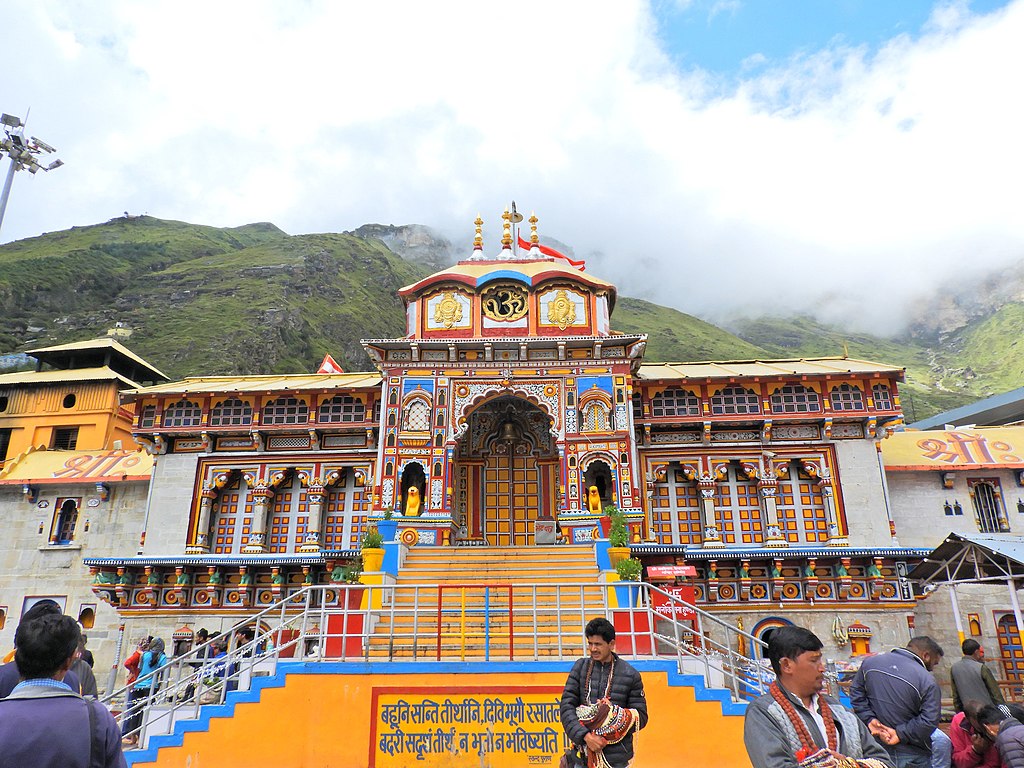Badrinath Temple
Badrinath Temple, a jewel in the Char Dham circuit, offers a profound spiritual experience amidst the tranquil and awe-inspiring Himalayas.

Badrinath Temple: A Sacred Himalayan Pilgrimage
| Deity: | Badrinath (Vishnu) and Badridevi (Lakshmi) |
| State – City: | Badrinath, Uttarakhand |
| Best time to visit | May-Oct |
| Open Hours | 6AM to 12PM and 4PM to 9PM |
| Popular festival | Mata Murti Ka Mela |
Find Other Connection
FAQ
Where is Badrinath temple located?
Badrinath, Uttarakhand
What is the origin and historical significance of Badrinath Temple?
The origins of Badrinath Temple trace back to ancient times, with a shrine believed to have existed at the site since the Vedic period. The current structure is attributed to Adi Shankaracharya, who re-established the temple in the 8th century AD after rediscovering the lost deity. The temple is situated at an altitude of 3,133 meters above sea level in Uttarakhand.
What are the cultural and mythological references associated with Badrinath Temple?
According to Hindu mythology, the temple’s location was chosen by Lord Vishnu himself. It is believed that Lord Vishnu performed penance here, and Goddess Lakshmi took the form of a Badri tree to provide him shade. Another legend suggests that the Pandavas visited Badrinath during their exile.The temple is one of the Char Dham (four abodes) pilgrimage sites, which are believed to be the abodes of Lord Vishnu. The Char Dham pilgrimage circuit includes Badrinath, Dwarka, Puri, and Rameswaram.
Who were the key figures in building or upgrading the temple?
The current structure was established by Adi Shankaracharya, a revered Indian philosopher and theologian who is credited with unifying and establishing the main currents of thought in Hinduism.
Over the centuries, the temple has seen several renovations:
- In the 16th century, the temple was significantly renovated by the Kings of Garhwal.
- In the 17th century, the temple was further enhanced under the rule of the King of Tehri.
- After suffering damage in an earthquake in 1803, the temple was repaired by the King of Jaipur.
- The temple has also undergone several recent reconstructions to enhance the accommodation of more pilgrims and to repair the structure of the temple.
What is the significance of Badrinath Temple as a pilgrimage site?
As one of the Char Dham and Chota Char Dham pilgrimage sites, Badrinath holds immense importance in Hinduism. Devotees believe that a visit to Badrinath can cleanse sins and help attain moksha (liberation). Badrinath is visited by millions of devotees every year, making it one of the most important pilgrimage destinations in India.
How is the Temple Architecture?
Style: The temple is built in the traditional Garhwali wooden architecture style, with intricate carvings and a distinct façade.
Structure: The temple features a vibrant facade with its main entrance known as the Singh Dwara. The premise of the children is home to fifteen idols and the most sacred building, a divine black stone in a state of meditation one meter tall of Lord Badrinarayan.
What is the Best Time to Visit?
Season: The best time to visit Badrinath is between May and October. The temple remains closed during winter (November to April) due to heavy snowfall.
Festivals: Maha Shivaratri, Badri-Kedar Utsav, and Mata Murti Ka Mela are significant festivals celebrated at the temple, providing a culturally rich experience.
Directions and How to Reach the Temple?
Badrinath Temple is located in the Chamoli district of Uttarakhand. Here’s how you can reach the temple:
- By Air: The nearest airport is Jolly Grant Airport in Dehradun, approximately 311 km from Badrinath. From the airport, one can hire a taxi or take a bus to reach the temple.
- By Train: The nearest railway station is Rishikesh, around 293 km away. Rishikesh is well-connected to major cities in India. From there, you can take a taxi or bus to Badrinath.
- By Road: Badrinath is accessible by road from various cities in Uttarakhand. Regular bus services and taxis are available from cities like Dehradun, Haridwar, and Rishikesh. The journey by road offers scenic views of the Himalayan landscape but can be challenging due to the mountainous terrain.
What unique features make Badrinath Temple special?
Hot Springs: Tapt Kund is a hot water sulfur spring, which is regarded to be auspicious and most importantly used for purified bathing. The hot spring near the temple, is believed to have healing properties. Pilgrims take a dip in its waters before entering the temple.
Scenic Beauty: The temple is set against the backdrop of the Neelkanth peak and offers breathtaking views of the Himalayan landscape.
The temple is one of the 108 Divya Desams, or holy abodes, of Lord Vishnu. It is also one of the five major Vaishnavite temples, known as Pancharama Kshetras.
Badrinath Temple stands as a beacon of devotion, spiritual significance, and cultural richness. Nestled in the majestic Himalayas, it offers an unparalleled experience of peace and enlightenment. Whether you visit as a pilgrim or a traveller, the temple’s serene environment and rich history are sure to leave a lasting impression. May your journey to Badrinath be one of spiritual fulfilment and divine blessings.







